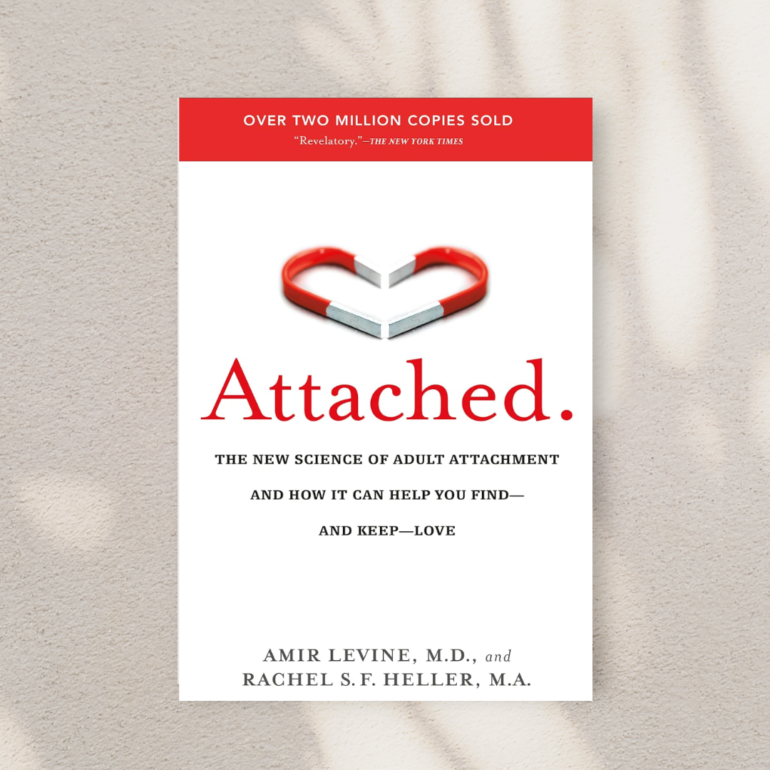Stress Management
Ever feel drained and depleted after a day at the office, even when you haven’t tackled an overwhelming workload? You’re not alone. Workplace burnout, characterized by emotional exhaustion, cynicism, and reduced effectiveness, is a growing epidemic impacting millions. While heavy workloads and tight deadlines certainly play a role, the secret sauce of our stress response might surprise you: our attachment styles.
Think of attachment styles as the invisible blueprints for how we connect with others. Shaped in our early lives, these styles influence everything from our romantic relationships to, you guessed it, our work interactions. But how exactly do our “attachment needs” translate into boardroom battles and email anxiety? Stay tuned, as we delve into the fascinating (and often surprising) ways our attachment styles influence our workplace stress and well-being.
Decoding Attachment Styles
Remember those playground cliques that seemed to form effortlessly? Our attachment styles, formed in early childhood interactions, play a similar role in shaping how we navigate the social landscape, including the professional one. Let’s decode the four main attachment styles and see how they manifest in the workplace:
1. Secure: Picture the colleague who’s a reliable rock, comfortable giving and receiving feedback, and thrives on collaboration. That’s the securely attached individual. They trust others, have healthy boundaries, and navigate conflict effectively. Think of them as the team player who fosters a positive and supportive environment.
2. Anxious: Ever feel like you’re constantly seeking approval from your boss or overthinking every email? Anxious attachment might be at play. These individuals crave reassurance, often fearing rejection and feeling insecure about their competence. Imagine the colleague who micromanages their work, gets easily offended by criticism, and struggles with delegation.
3. Avoidant: Does your coworker seem aloof and emotionally distant, preferring to work solo and rarely seeking connection? They might exhibit avoidant attachment. These individuals prioritize independence, often suppressing emotions and keeping others at arm’s length. Picture the colleague who avoids meetings, deflects feedback, and maintains a strictly professional demeanor.
4. Disorganized: This less common style is characterized by a mix of anxious and avoidant tendencies, leading to unpredictable and inconsistent behavior. Imagine the coworker who one minute is intensely close with colleagues, the next withdraws completely, creating confusion and uncertainty.
These are just simplified snapshots, and remember, attachment styles exist on a spectrum, not in rigid categories. But by recognizing these patterns, we can gain valuable insights into ourselves and our colleagues, paving the way for healthier and more fulfilling work relationships.
Workplace Example:
During a brainstorming session, the secure colleague actively listens, offers suggestions, and celebrates others’ ideas. The anxious colleague might hesitantly share their ideas, constantly seeking validation, while the avoidant colleague remains silent, preferring to work on their own later. The disorganized colleague might start enthusiastically, then become withdrawn and critical, creating tension in the group.
In the next section, we’ll explore how these attachment styles can contribute to burnout and, more importantly, discover strategies for managing stress and fostering healthier connections at work.
How Attachment Styles Impact Burnout
Now that we’ve met the “attachment crew,” let’s understand how they can influence our susceptibility to burnout. Remember, burnout isn’t just about workload; it’s about the emotional toll of our work relationships.
1. Secure: While not immune, securely attached individuals tend to navigate stress more effectively. Their trust and healthy boundaries allow them to delegate, seek support, and maintain perspective during challenging situations.
2. Anxious: Constant reassurance seeking, fear of rejection, and overthinking can be a recipe for burnout. Anxiously attached individuals might overwork to avoid disapproval, struggle with feedback, and experience heightened emotional exhaustion. Imagine the colleague who stays late every night, fearing they’ll be seen as lazy, or takes every criticism personally, leading to stress and anxiety.
3. Avoidant: While avoiding emotional connection can initially shield them from stress, avoidantly attached individuals can eventually suffer from isolation and a lack of support. Bottling up emotions, neglecting feedback, and struggling with collaboration can lead to feelings of cynicism and decreased effectiveness, key components of burnout.
4. Disorganized: The unpredictable nature of this style can be particularly stressful. The push-pull of closeness and withdrawal can create confusion and tension in relationships, making it difficult to build trust and receive support, ultimately leading to feelings of isolation and burnout.
Unhealthy Coping Mechanisms
Insecure attachment styles can also lead to unhealthy coping mechanisms that further exacerbate stress and burnout. For example:
- Anxious individuals: Might turn to people-pleasing, overworking, or unhealthy habits to manage their anxiety.
- Avoidant individuals: Might resort to substance abuse, social isolation, or cynicism to disconnect from their emotions.
- Disorganized individuals: Might engage in impulsive behaviors, self-sabotaging actions, or emotional outbursts, creating instability and stress for themselves and others.
Remember, these are just tendencies, not rigid rules. By understanding our own attachment styles and those of our colleagues, we can cultivate healthier coping mechanisms and build more supportive relationships at work, ultimately reducing our risk of burnout.
In the next section, we’ll explore practical strategies for managing stress and fostering healthier connections based on your attachment style.
Interested in Learning More About Attachment Styles?
Unlock the secrets to finding and keeping love with the revolutionary science of adult attachment! This cutting-edge field, pioneered by psychologist John Bowlby, reveals how each of us approaches relationships in unique ways.
Are you:
- Ever-worrying about your partner’s feelings? You might be anxious attached, seeking constant reassurance.
- Craving independence, even at the cost of closeness? You could be avoidant attached, keeping others at arm’s length.
- Comfortable with intimacy and open affection? You’re likely securely attached, enjoying healthy connections.
Attached helps you discover your own attachment style and that of your partner (or potential partner), providing a clear path to building stronger, more fulfilling relationships. It’s your guide to navigating love with understanding and creating connections that truly last!
De-stressing Decoded: Strategies for Each Attachment Style
Ready to break free from the stress spiral and build resilience in your professional life? Buckle up, because we’re diving into personalized strategies based on your attachment style!
1. Secure: You’re already on a great path, but don’t underestimate the power of self-care. Prioritize healthy boundaries, delegate tasks effectively, and seek support from trusted colleagues when needed. Remember, even secure individuals need a recharge sometimes!
2. Anxious: Take a deep breath and focus on self-compassion. Practice mindfulness techniques like meditation or journaling to manage anxiety. Celebrate your achievements, set realistic expectations, and don’t hesitate to seek reassurance from supportive colleagues (but remember, not everyone needs to be your therapist!).
3. Avoidant: Stepping outside your comfort zone is key. Practice open communication by sharing your thoughts and feelings in a safe space. Delegate tasks to build trust and collaboration, and consider joining a team or project to foster connection. Remember, healthy relationships are not a threat, they can be a source of strength.
4. Disorganized: Finding consistency is your superpower. Establish routines to manage your emotions and prioritize tasks. Seek professional help if needed to develop healthier coping mechanisms and build secure attachment patterns. Remember, you deserve support and understanding, both from yourself and others.
- Self-Awareness is Key: Understanding your attachment style is the first step towards positive change. Reflect on your past and present relationships, and consider taking an attachment style quiz for further insight.
- Open Communication is Golden: Talk to trusted colleagues and supervisors about your needs and concerns. Building healthy relationships fosters support and reduces stress.
- Boundaries are Your Best Friend: Learn to say “no” and delegate tasks to avoid overload. Prioritize your well-being, and don’t be afraid to set boundaries to protect your emotional energy.
- Seek Support: Don’t struggle alone. Talk to a therapist, join a support group, or explore mindfulness practices to manage stress and build resilience.
Remember, changing your attachment style takes time and effort, but with awareness and these practical strategies, you can cultivate healthier work relationships, manage stress effectively, and build a more fulfilling and resilient professional life.
Conclusion
Remember, your attachment style isn’t a destiny, but rather a roadmap that can be navigated with awareness and intention.
Key Takeaways:
- Our attachment styles, shaped in early childhood, influence how we connect with colleagues and supervisors, impacting our stress response.
- Secure attachment fosters resilience, while insecure styles can contribute to burnout susceptibility.
- Understanding your own attachment style and those of your colleagues is key to building healthier work relationships and managing stress.
Managing stress isn’t just about surviving the workday; it’s about investing in your long-term well-being. By exploring the strategies tailored to your attachment style, you can build resilience, cultivate healthier connections, and create a more fulfilling work experience.
Remember:
- Self-awareness is your superpower. Reflect on your past and present relationships to understand your attachment style and its impact.
- Open communication is key. Talk to trusted colleagues and supervisors about your needs and concerns.
- Healthy boundaries are your allies. Learn to say “no” and delegate tasks to avoid overload. Prioritize your well-being.
- Seek support when needed. Consider therapy, support groups, or mindfulness practices to manage stress and build resilience.
Building healthy work relationships and managing stress isn’t a sprint, it’s a journey. Take it one step at a time, celebrate your progress, and remember, with effort and awareness, you can transform your workplace into a source of connection, support, and resilience.
SHARE
THREADS
Related

Caroline
As a tech industry professional, she experienced the detrimental effects of burnout and chronic pain firsthand. Motivated by her own journey, she now dedicates herself to assisting others in finding resources and support.
Caroline Who?

As tech industry professional, Caroline experienced the detrimental effects of burnout and chronic pain firsthand. Motivated by her own journey, she now dedicates herself to assisting others in finding resources and support. Through The Happy Soup, Caroline shares resources and personal stories, providing a roadmap for recovery and offering a guiding hand to those facing similar challenges. With a compassionate approach, she inspires individuals to reclaim their lives, emphasizing that they are not alone in their struggles.

